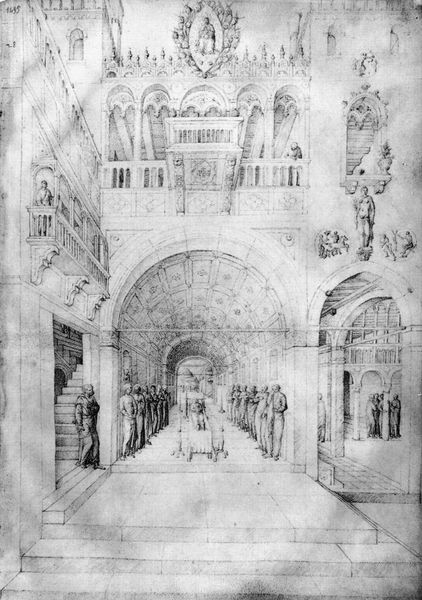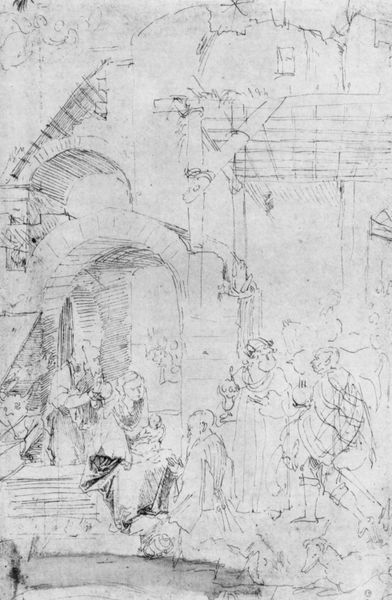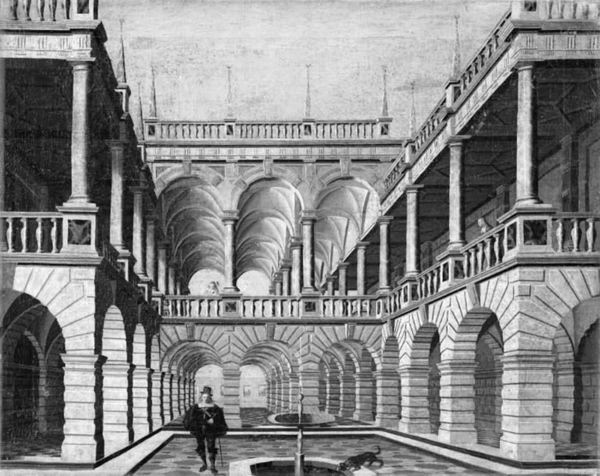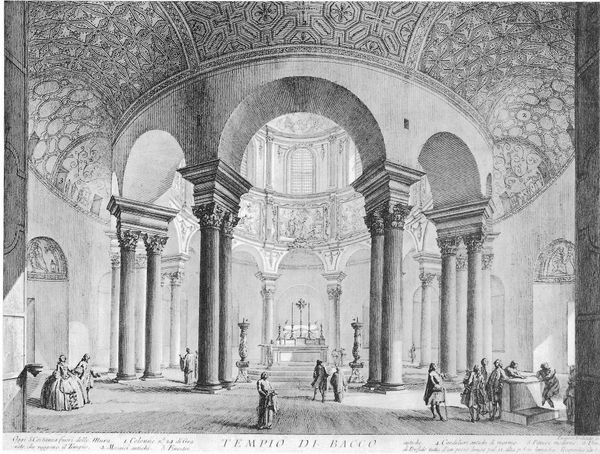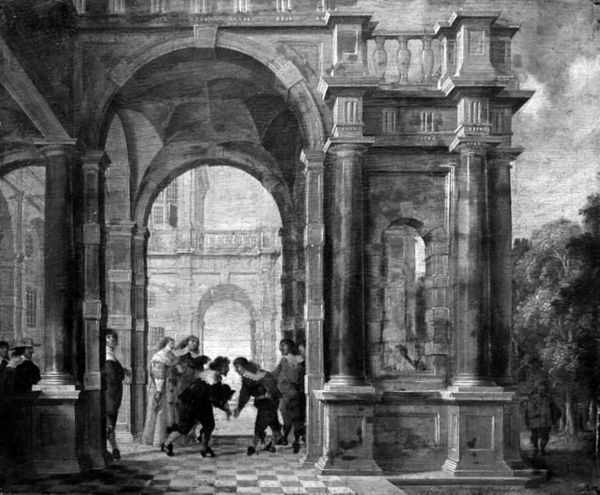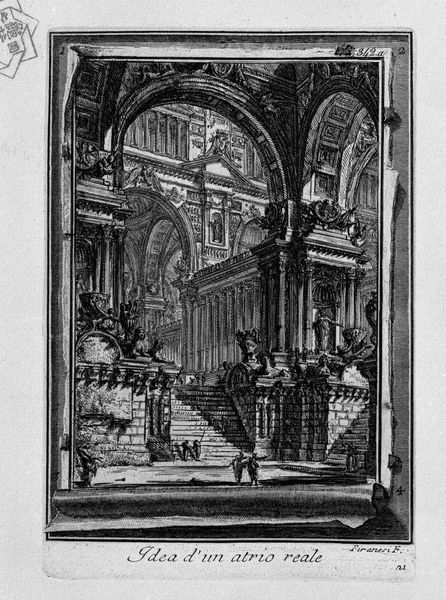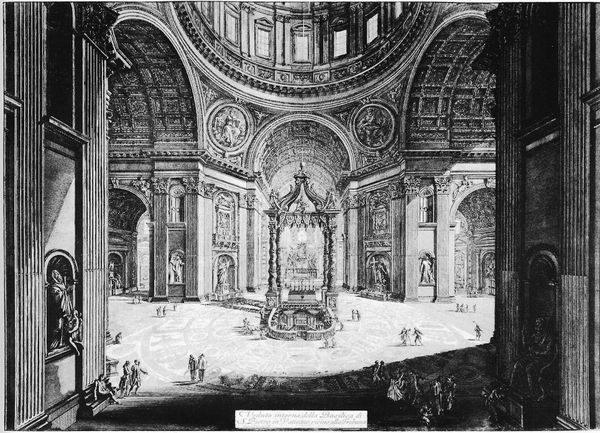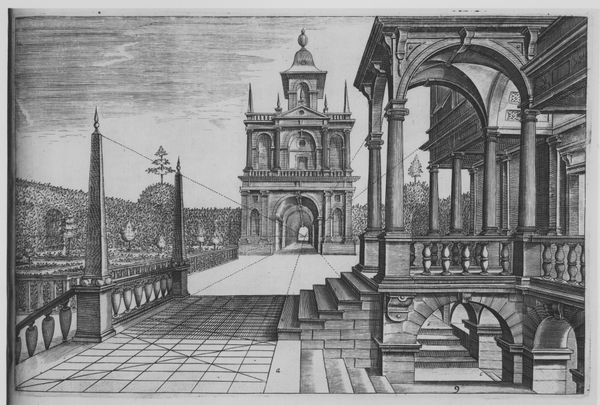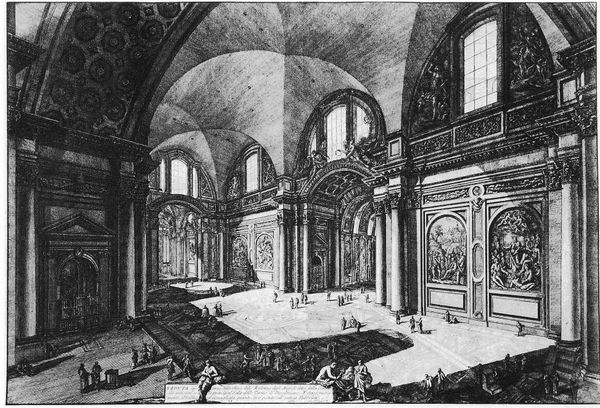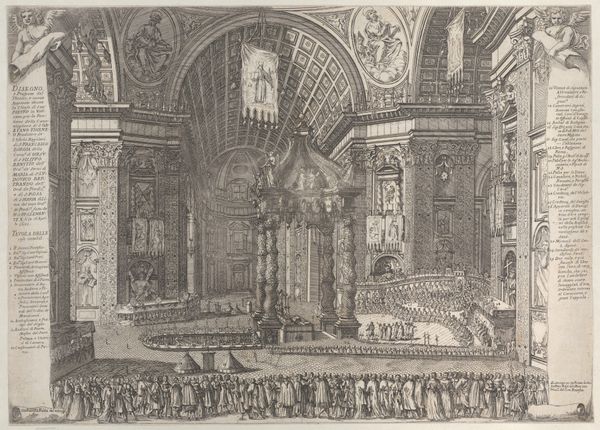
drawing, paper, photography, ink, pen, architecture
#
drawing
#
pencil sketch
#
perspective
#
charcoal drawing
#
figuration
#
paper
#
photography
#
ink
#
pen-ink sketch
#
arch
#
pen work
#
pen
#
cityscape
#
italian-renaissance
#
early-renaissance
#
architecture
Dimensions: 28.6 x 42.6 cm
Copyright: Public domain
Curator: This drawing, aptly titled "Flagellation," was rendered around 1450 by Jacopo Bellini. You'll find it here at the Louvre. It's crafted with pen, ink, and paper, demonstrating the delicate artistry of the Early Renaissance. Editor: Immediately, what strikes me is the dizzying perspective. It pulls you into the architecture, a stage set for a narrative that is at once present and absent. A ghost story etched in lines. Curator: Bellini’s use of perspective is indeed striking. Consider the complex geometry at play, creating an illusion of depth that pushes the boundaries of representation at the time. How does this meticulous construction, this pen work, interact with the social narratives of his time? Editor: The architecture speaks volumes about the culture of the era. I notice repeated arches and colonnades creating visual echoes within echoes, as well as the figures that punctuate them like ornaments. A dance between grand structures and those dwelling inside it, yet their exact relationship remains ambiguous, or perhaps unattainable. Curator: Yes, but Bellini’s choices were deliberate. Italian Renaissance society placed architecture not only as the backdrop of power but its instrument as well, and drawing allowed Bellini to experiment freely with how structures might govern lived spaces and shape daily rituals. Editor: Perhaps, but what resonates beyond historical context is that the architectural detailing dominates; it almost eclipses the human drama. It could be any anonymous moment lifted from an ancient city frozen and rendered here, its energy carefully subdued. Curator: I see a different tension in these drawings. The deliberate crafting of line, the choice of materials – the cost of ink and paper – points to an active process that brings focus to not only representation, but who gets represented, why, and for whom. In "Flagellation", architecture is one commodity produced and consumed; its labor, artistry, and vision carry different social meaning and possibilities. Editor: Well, viewing it as the arrangement of shapes, forms, and light reveals an almost diagrammatic essence. The beauty is precisely within its restrained approach. As if, despite the underlying grim suggestion in the title, beauty can emerge from even a clinical, considered observation. Curator: A clinical observation produced through skilled labor with valuable materials that allowed stories to live, if only in the imaginations of the powerful. I’ll remember to keep the materiality and conditions of labor of this beautiful pen and ink work at the front of my mind going forward. Editor: Indeed. Pondering its architectural bones through this material awareness is sure to enrich our view, if not further inform what this "Flagellation" shows us and keeps obscured.
Comments
No comments
Be the first to comment and join the conversation on the ultimate creative platform.
